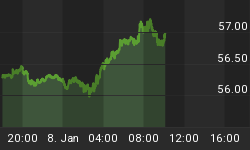There are 67 countries between the United States, Canada, EAFE, emerging market and frontier market countries. It may be helpful to you if you visualize the geographic relationship between those countries when you think about making country, region or development stage country investments.
The pie chart shows the relative market cap size of the US, Canada, the 21 EAFE (Europe, Australasia, Far East) countries, and the 25 emerging market countries. The stock market capitalization of the 19 frontier market countries is essentially negligible in comparison to the other market categories.

The map color codes the location of Canada, EAFE countries, and the emerging and frontier market countries. The US in not color coded.

It is interesting to note that the square area of the emerging markets is quite large in comparison to the US, or the EAFE developed non-US markets. That is the opposite of the relative market cap sizes.
China and India, which are within the emerging markets, also hold more than 1/3 of the world's 6 billion population. The US, Canada, and EAFE combined have about 1/6 of the world's population.
You can see from the map that most of the frontier market countries are adjacent to emerging countries. It will probably be just a matter of time before they emerge as well.
Some experts say that the frontier markets are today where the emerging markets were 15 years ago. If that is true, then there is a quite volatile, but wealth producing opportunity ahead in those markets -- seat belts and air bags are recommended for that trip.
Most of Africa has not yet developed tradable stock markets, as you can see by the large area without color coding.
There are no frontier market ETFs or CEFs currently available in the US on a major exchange. That is likely to change, but for now there are limited opportunities, such as the T. Rowe Price Africa and Middle East mutual fund (TRAMX).
Because there will be frontier investment products coming along, we think it is a good idea for investors to begin to familiarize themselves with those markets. Toward that end, we have previously published articles about them -- two of which we mention here on the topics of Country Risks and Macroeconomics.
The tables list the countries in the MSCI indices and identify an ETF (or CEF, if no ETF available) for each country for which one of those investment fund types is available.



















